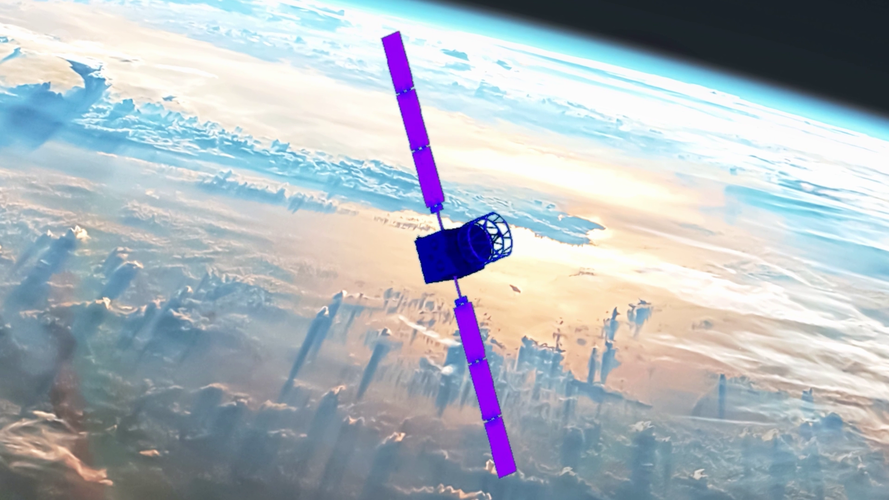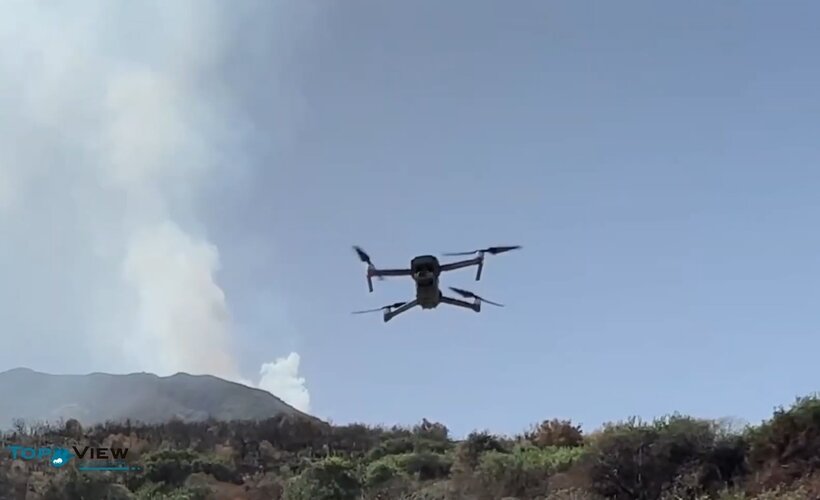In new space race, scientists propose geoarchaeology can aid in preserving space heritage
Friday, 21 July 2023 15:58
As a new space race heats up, two researchers from the Kansas Geological Survey at the University of Kansas and their colleagues have proposed a new scientific subfield: planetary geoarchaeology, the study of how cultural and natural processes on Earth's moon, on Mars and across the solar system may be altering, preserving or destroying the material record of space exploration.
"Until recently, we might consider the material left behind during the space race of the mid-20th century as relatively safe," said Justin Holcomb, postdoctoral researcher at the Kansas Geological Survey, based at the University of Kansas, and lead author on a new paper introducing the concept of planetary geoarchaeology in the journal Geoarchaeology.
"However, the material record that currently exists on the moon is rapidly becoming at risk of being destroyed if proper attention isn't paid during the new space era."
Since the advent of space exploration, humans have launched more than 6,700 satellites and spacecraft from countries around the globe, according to the Union of Concerned Scientists.
First Astranis satellite sidelined by post-deployment glitch
Friday, 21 July 2023 13:01
The first Astranis-built satellite won’t be able to provide commercial broadband over Alaska for local telco Pacific Dataport because it can’t keep solar arrays pointed at the sun, the Californian manufacturer’s CEO John Gedmark said July 20.
Week in images: 17-21 July 2023
Friday, 21 July 2023 12:05
Week in images: 17-21 July 2023
Discover our week through the lens
Journey back to Earth: Aeolus' historic reentry
Friday, 21 July 2023 12:00 Video:
00:05:00
Video:
00:05:00
ESA’s wind mission Aeolus is coming home. After five years of improving weather forecasts, the satellite will return in a first-of-its-kind assisted reentry. At ESA’s Space Operations Centre in Germany, mission control will use the satellite’s remaining fuel to steer Aeolus during its return to Earth.
Find out more about the mission, its successes and how Aeolus is paving the way for safe reentries.
Rescue drones tested within Italian volcanoes
Friday, 21 July 2023 11:28
Interconnected drones have been dispatched into volcanic territory to test their use for civil protection, to help guide responses to natural disasters using novel PNT technology. The project, named Pathfinder, is supported through ESA’s Navigation Innovation and Support Programme, NAVISP. Two test campaigns have been undertaken to date, around the active Stromboli Island volcano and within the Astroni Nature Reserve, in a volcanic crater near Naples.
Life on Earth didn't arise as described in textbooks
Friday, 21 July 2023 10:56 No, oxygen didn't catalyze the swift blossoming of Earth's first multicellular organisms. The result defies a 70-year-old assumption about what caused an explosion of oceanic fauna hundreds of millions of years ago.
Between 685 and 800 million years ago, multicellular organisms began to appear in all of Earth's oceans during what's known as the Avalon explosion, a forerunner era of the mor
No, oxygen didn't catalyze the swift blossoming of Earth's first multicellular organisms. The result defies a 70-year-old assumption about what caused an explosion of oceanic fauna hundreds of millions of years ago.
Between 685 and 800 million years ago, multicellular organisms began to appear in all of Earth's oceans during what's known as the Avalon explosion, a forerunner era of the mor On space, poll shows most Americans support NASA's role, U.S. presence
Friday, 21 July 2023 10:56 New polling data released by the Pew Research Center indicates that Americans want the nation to maintain a continued presence in space.
A sample group of 10,329 U.S. adults was surveyed between May 30 and June 4.
About seven in 10 respondents said America's role in space was essential, while 30% said it was not.
The survey indicates that 47% of Americans have done at leas
New polling data released by the Pew Research Center indicates that Americans want the nation to maintain a continued presence in space.
A sample group of 10,329 U.S. adults was surveyed between May 30 and June 4.
About seven in 10 respondents said America's role in space was essential, while 30% said it was not.
The survey indicates that 47% of Americans have done at leas Asteroid-smashing NASA probe sent boulders into space
Friday, 21 July 2023 10:56 When a NASA spacecraft successfully knocked an asteroid off course last year it sent dozens of boulders skittering into space, images from the Hubble telescope showed on Thursday.
NASA's fridge-sized DART probe smashed into the pyramid-sized, rugby ball-shaped asteroid Dimorphos roughly 11 million kilometres (6.8 million miles) from Earth in September last year.
The spacecraft knocked th
When a NASA spacecraft successfully knocked an asteroid off course last year it sent dozens of boulders skittering into space, images from the Hubble telescope showed on Thursday.
NASA's fridge-sized DART probe smashed into the pyramid-sized, rugby ball-shaped asteroid Dimorphos roughly 11 million kilometres (6.8 million miles) from Earth in September last year.
The spacecraft knocked th MSU studies nutrients that may have fertilized ancient photosynthesis in Earth's oceans
Friday, 21 July 2023 10:56 The Earth is 4.5 billion years old, and, during that time, it has seen some things. Life has been a part of most of that history, but what life has looked like has changed dramatically over the eons.
Deciphering how life worked on this planet during its different epochs is one of the things that Dalton Hardisty works on at Michigan State University.
In fact, he's part of an internati
The Earth is 4.5 billion years old, and, during that time, it has seen some things. Life has been a part of most of that history, but what life has looked like has changed dramatically over the eons.
Deciphering how life worked on this planet during its different epochs is one of the things that Dalton Hardisty works on at Michigan State University.
In fact, he's part of an internati Despite doubts from quantum physicists: Einstein's theory of relativity reaffirmed
Friday, 21 July 2023 10:56 One of the most basic assumptions of fundamental physics is that the different properties of mass - weight, inertia and gravitation - always remain the same in relation to each other. Without this equivalence, Einstein's theory of relativity would be contradicted and our current physics textbooks would have to be rewritten. Although all measurements to date confirm the equivalence principle, qua
One of the most basic assumptions of fundamental physics is that the different properties of mass - weight, inertia and gravitation - always remain the same in relation to each other. Without this equivalence, Einstein's theory of relativity would be contradicted and our current physics textbooks would have to be rewritten. Although all measurements to date confirm the equivalence principle, qua Protecting Space Assets through Innovation: Hyperspace Challenge 2023
Friday, 21 July 2023 10:56 U.S. Space Force's Hyperspace Challenge, an innovation accelerator, has declared the commencement of its 2023 program. This endeavor, in collaboration with the Space Rapid Capabilities Office (Space RCO) of the U.S. Space Force, aims to bring together a pool of seasoned researchers and established firms. The objective of the 2023 cohort is to brainstorm novel strategies to enhance the resilience
U.S. Space Force's Hyperspace Challenge, an innovation accelerator, has declared the commencement of its 2023 program. This endeavor, in collaboration with the Space Rapid Capabilities Office (Space RCO) of the U.S. Space Force, aims to bring together a pool of seasoned researchers and established firms. The objective of the 2023 cohort is to brainstorm novel strategies to enhance the resilience The Strategic Use of Varied Orbits: US Space Force's New Mission
Friday, 21 July 2023 10:56 With the majority of artificial objects in space concentrated in the Low Earth Orbit (LEO), it's easy to see why this orbit is a hotbed of activity. LEO, the orbit closest to Earth, is the simplest to access from an energy and rocket power perspective. From the International Space Station and the Hubble Telescope to the approximately 4,000 SpaceX Starlink satellites, the occupants of LEO are notably diverse.
With the majority of artificial objects in space concentrated in the Low Earth Orbit (LEO), it's easy to see why this orbit is a hotbed of activity. LEO, the orbit closest to Earth, is the simplest to access from an energy and rocket power perspective. From the International Space Station and the Hubble Telescope to the approximately 4,000 SpaceX Starlink satellites, the occupants of LEO are notably diverse. Hack-A-Sat's Moonlighter Satellite deploys to LEO after successful launch
Friday, 21 July 2023 10:56 Moonlighter reached low earth orbit July 5 after a short visit at the International Space Station and is on track for its inaugural mission: to host an on-orbit cybersecurity challenge during Hack-A-Sat 4 finals, making it the first on-orbit Capture the Flag, or CTF, hacking competition.
It took four years, but "this year, we are in space for real," said Steve C
Moonlighter reached low earth orbit July 5 after a short visit at the International Space Station and is on track for its inaugural mission: to host an on-orbit cybersecurity challenge during Hack-A-Sat 4 finals, making it the first on-orbit Capture the Flag, or CTF, hacking competition.
It took four years, but "this year, we are in space for real," said Steve C On the wing-lets of innovation with NASA Armstrong
Friday, 21 July 2023 10:56 Forty-four years ago this July, NASA began testing a technology that would become one of the agency's most visible and beneficial contributions to commercial aviation - winglets, the upturned ends of airplane wings.
Inspired by the way birds curl their wingtip feathers upward, this innovation was developed by NASA's Langley Research Center in Langley, Virginia. After testing this design in
Forty-four years ago this July, NASA began testing a technology that would become one of the agency's most visible and beneficial contributions to commercial aviation - winglets, the upturned ends of airplane wings.
Inspired by the way birds curl their wingtip feathers upward, this innovation was developed by NASA's Langley Research Center in Langley, Virginia. After testing this design in Climate and land use shifts alter Africa's Sudano-Sahelian dryland regions
Friday, 21 July 2023 10:56 A comprehensive understanding of the long-term vegetation dynamics and their potential influences in the Sudano-Sahelian region of Africa is pivotal in progressing sustainable management of these delicate dryland ecosystems. These trends and changes, particularly those not attributable to rainfall, need a more in-depth examination to decode the role of non-climatic factors like land use and land
A comprehensive understanding of the long-term vegetation dynamics and their potential influences in the Sudano-Sahelian region of Africa is pivotal in progressing sustainable management of these delicate dryland ecosystems. These trends and changes, particularly those not attributable to rainfall, need a more in-depth examination to decode the role of non-climatic factors like land use and land 
